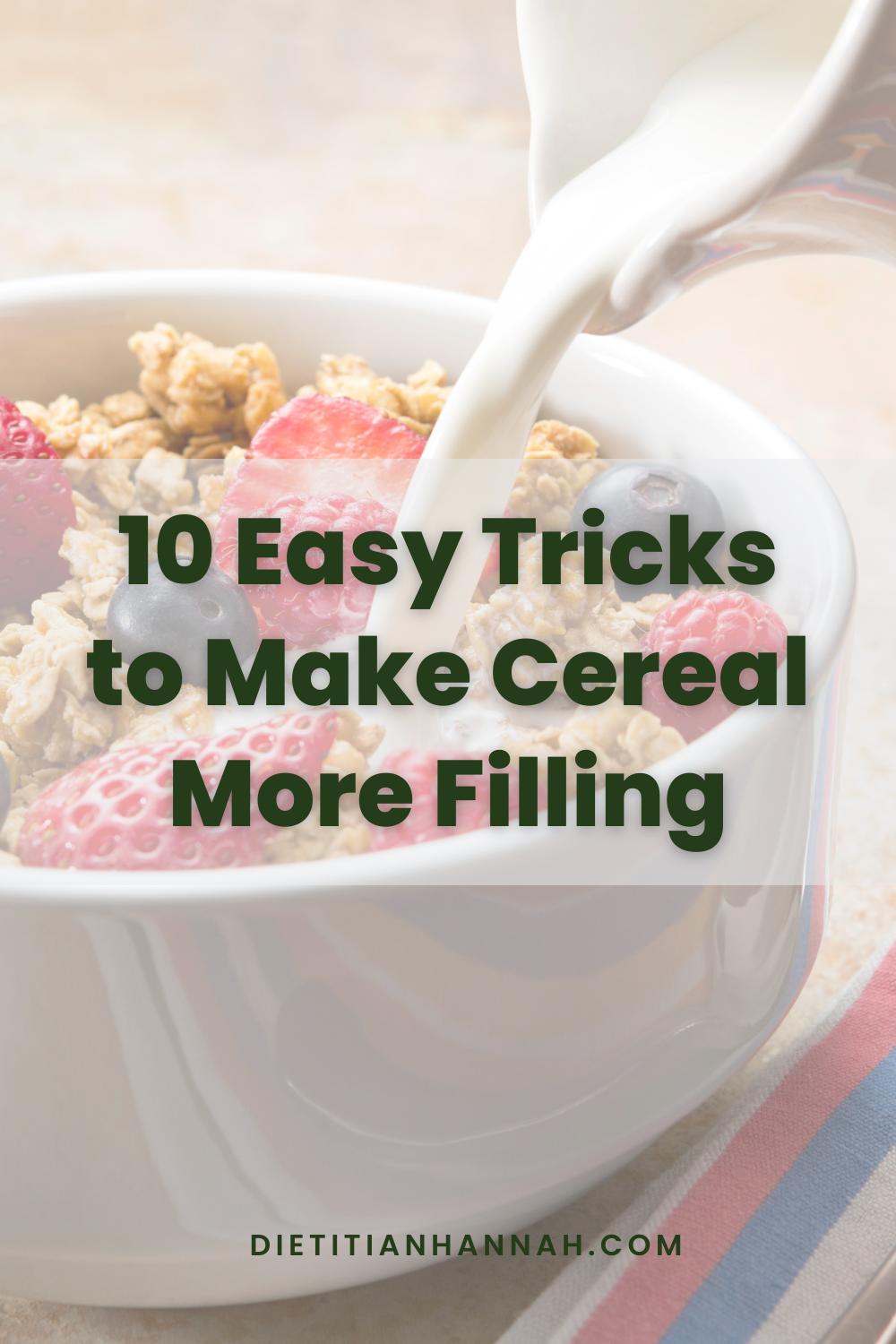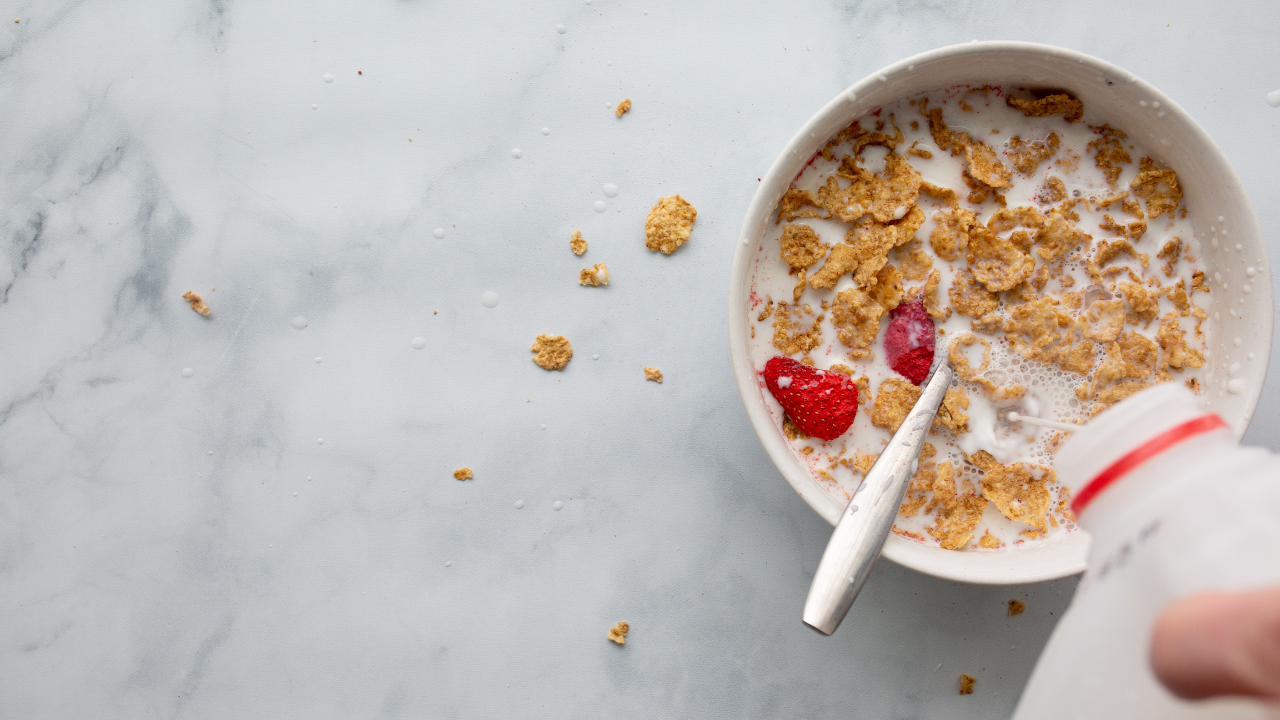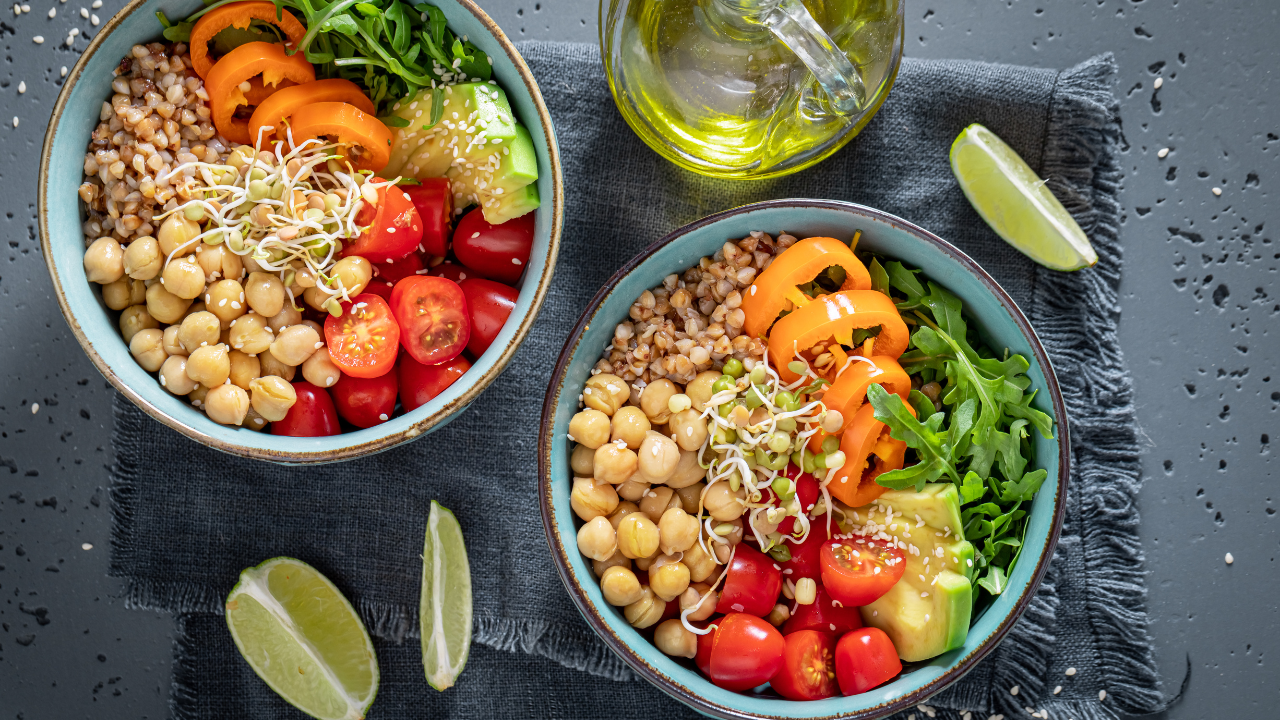10 Easy Tricks to Make Cereal More Filling
There’s a reason why cereal is one of the most popular breakfast foods. It’s tasty, convenient, and relatively affordable. As a dietitian, I myself enjoy a nice bowl of cereal for breakfast or even as a snack.
Cereal gets a bad rap, and it is true that eating cereal on its own may not be the most satisfying or filling breakfast. But cereal itself offers many essential nutrients and there are quite a few ways to jazz it up so it keeps you feeling full for longer.
Table of contents:
Is cereal healthy?
You may find this answer incredibly frustrating, but it depends. I dislike defining foods as “healthy” or “unhealthy”, as what is “healthy” for one person may not be “healthy” for another.
There is so much that goes into making a food choice beyond even the nutrients that are in food. And it’s okay to eat foods just because you enjoy the taste!
All that said, cereal can absolutely be included in a balanced diet. Most cereals are composed mainly of carbohydrates, which is an essential nutrient that we need each day. In this blog, I will share some tips on how to add to your favorite cereal so that it offers even more beyond carbohydrates.
The way that each person decides to incorporate cereal into their diet will depend on their lifestyle and goals. For example, because cereal is generally a carb-rich food, someone with diabetes may choose to incorporate a source of protein and fat with their bowl of cereal to help balance their blood sugars. On the other hand, someone who is eating cereal as a pre-workout snack would not necessarily want to add protein or fat because simple carbs are exactly what their body needs for exercise.
Nutrition benefits of cereal
Fiber
As mentioned, cereal is generally a carbohydrate-rich food. This does not mean that cereal is “bad” or “unhealthy”. Our bodies need carbs and cereal can be one way to get them in!
Some cereals will also have fiber, which is a type of indigestible carbohydrate. Cereals made with whole grains tend to be the ones that offer the most fiber.
Related post: Are You Eating Enough Fiber?
Vitamins and minerals
Many cereals are also fortified with various vitamins and minerals, such as iron and B vitamins. Cereal critics will argue that these nutrients don’t “count” and claim that they are “fake”, but this is untrue (and doesn’t even make much sense, to be honest).
Nutrient fortification started as a public health policy to prevent nutrient deficiencies within a population. Because breakfast cereal is a common food item in many peoples’ homes, fortifying it with vitamins and minerals helps to ensure people are meeting their daily nutrient needs.
Protein
With the rise of high-protein diets, more and more cereals are being formulated to meet this demand. I will share a few high-protein cereal options below if you are interested. That said, it is more than okay if you choose cereal that is low in protein! Not every food that we eat has to be optimized for a specific nutrient.
Many cereals will offer a few grams of protein, even if they are not marketed as a protein cereal. Adding cow’s milk or soy milk to your bowl of cereal will also provide protein.
Related post: How Much Protein Do You Actually Need?
How to make cereal more filling
Your average bowl of cereal may not keep you full for very long. And while there is nothing wrong with eating said bowl of cereal, I want to share some gentle nutrition tips to increase the nutrient density and satisfaction factor of your favorite cereal.
@dietitianhannah Replying to @Dee ask and you shall receive! #nutritionbyaddition #nutritiontips #easybreakfast #easymeals #highprotein #dietitiantips #dietitiansoftiktok #dietitianhannah #gentlenutrition #intuitiveeating #vitaluralabs #easyeats ♬ original sound - Dietitian Hannah
The common theme you may notice is the recommendation to incorporate a protein, fat, and fiber source (or at least one of the three) with your cereal, as these nutrients help stabilize blood sugars and keep us fuller for longer.
You may also choose to mix and match these tips to create your ideal bowl of cereal.
Sprinkle with nuts and seeds
Nuts and seeds offer protein, fat, and fiber, making them the perfect topper to a bowl of cereal. You can choose to add whichever ones you have available. Some of my favorites to add to cereal are chia seeds, hemp heart seeds, pumpkin seeds, cashews, and slivered or sliced almonds.
Add a spoonful of nut butter
Because nut butters are made from nuts, they also offer protein, fat, and fiber. You can dunk a spoonful of your favorite nut butter into you bowl of cereal with milk or drizzle it on top.
Top with fruit
Fruit is a source of fiber along with lots of vitamins and minerals. Try adding your favorite berries, banana slices, apple or pear chunks, pomegranate seeds, or dried fruit to your next bowl of cereal.
Choose the milk that is right for you
There are a wide variety of milks and milk alternatives on the market these days and there are many factors that go into choosing which milk to buy, including price, allergies and intolerances, and taste. There is not a “right” or “wrong” milk to choose. Consider what your choice of milk can offer you!
Cow’s milk is a source of complete protein. If you choose a higher fat dairy milk, such as whole milk, the fats will also aid in keeping you full and satisfied.
If you choose not to consume cow’s milk for any reason, soy milk and pea milk may also be fine choices that offer a good source of protein.
Milk alternatives such as almond milk, coconut milk, and oat milk typically do not offer much, if any, protein. This does not mean that you can’t enjoy them! I would just suggest adding alternate protein sources to your bowl of cereal since the milk would not be providing much in the way of protein.
Related post: How to Choose the Right Milk for You
Use a protein shake
For an even bigger protein boost, some people enjoy using a protein shake as the “milk” in their bowl of cereal. This could be either a pre-made protein shake or you might mix your favorite protein powder with your milk of choice before pouring it over your cereal.
Turn it into trail mix
Instead of having a bowl of cereal with milk, use your favorite cereal to make a trail mix. Add nuts and seeds, dried fruit, and chocolate candies for a snack you can take on the go.
Use as a topping on yogurt
Granola on yogurt is a classic, but you can use any cereal you like as a topping. Bonus points if you add some fruit, too!
If you are looking for a high-protein yogurt option, I compiled some of my favorites in this list.
Have it as a side dish
If you simply enjoy your favorite cereal without any of these add-ins, you can of course always choose to eat it all on its own. To get some protein, fat, and/or fiber, perhaps enjoy the bowl of cereal as a side dish to a meal that offers these nutrients. For example, have some eggs and fruit to go with your breakfast cereal.
Enjoy as dessert
Cereal is not just a breakfast food! Having a bowl of cereal after lunch or dinner is one of my favorite ways to enjoy it. The protein, fat, and fiber in your main meal will help to stabilize blood sugars and keep you full after enjoying dessert.
Choose high-fiber or high-protein varieties
There are so many different cereals on the market, each with slightly different nutrition profiles. While there is absolutely nothing wrong with choosing a sweeter, low-protein, low-fiber cereal (Cinnamon Toast Crunch is my personal favorite), there are higher protein and fiber options out there. You may also choose to mix them half and half for the best of both worlds.
High-protein cereals to buy
Once again, you do not need to eat “high-protein this” and “high-protein that”. You can enjoy any cereal you like! These are just a few options for those who may be interested.
High-fiber cereals to buy
Looking for a fiber boost? Here are a few cereals you might like.
Bottom line
There are so many different ways to turn your breakfast cereal into a balanced meal or snack. Despite what diet culture says, cereal can be a great source of many nutrients as well as a vehicle to add even more.
What is your favorite way to enjoy cereal? Leave a comment below!
Disclaimer: this post is for informational and educational purposes only and is not a substitute for professional medical advice.

















































